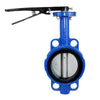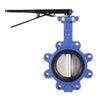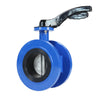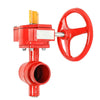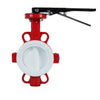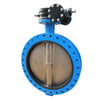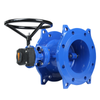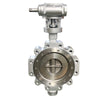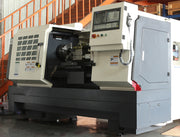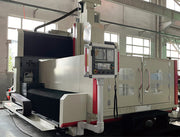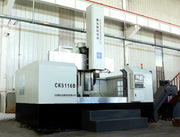
Butterfly Valve
As a leading butterfly valve manufacturer, we offer a comprehensive range of high-quality industrial butterfly valves, designed to meet the rigorous demands of engineering projects and water systems.
Our valves are ISO9001:2008, CE, and WRAS certified, ensuring top-tier performance and reliability. Whether you need durable solutions for large-scale installations or custom valve designs, our expert team is here to assist. Explore our selection and discover why we are the trusted choice for engineers and stockists worldwide.
Precision Butterfly Valve Manufacturing Excellence
We strive for excellence in Butterfly valve products.
Butterfly Valve Quality Testing Equipment
Introducing Our New CNC Lathe and Driling Machines for Superior Butterly Valve Machining

Butterfly Valve Gate Valve Testing
Torque and Life Testing for Butterfly Valve and Gate Valves

Valve Life Test Bench
Provides detailed insights into valve pressure testing and other critical parameters.
Butterfly Valve Quality Testing Equipment
Sophisticated inspection and testing equipment is essential to ensure product reliability and safety.
Professional butterfly valve inspector
We have a team of expert inspectors dedicated to ensuring the safety and reliability of our Butterfly valve.

Ductile-lron-Grinding

Metallographic-microscope-observation

Spherical-content-observation

Shaft-hardness-test

Observe-the-dent

Record-position

Ultrasonic-testing

Magnetic-particle-testing

Penetration-detection
1.What is a Butterfly Valve?
The butterfly valve is a simple structure regulating valve, mainly used for low-pressure pipeline media switching control.
The closing part of the butterfly valve is a disc-shaped butterfly plate, which can be rotated 90 degrees around the valve axis, thus realizing opening and closing.
This valve in the pipeline is mainly used for cutting off and throttling purposes. It is suitable for controlling the flow of various types of fluids such as air, water, steam, corrosive media, slurry, oil, liquid metals, and radioactive media.
The opening and closing part of the butterfly valve is a disc-shaped butterfly plate, which rotates around its own axis in the valve body to achieve the purpose of opening, closing, or regulation.
2.How butterfly valve works?
The circular disc of the butterfly valve rotates around the valve stem by 90 degrees or approximately 90 degrees. The valve opening is determined by the rotation angle of the disc, thereby regulating and controlling the flow of the medium.
3.What are the main types of butterfly valves?
The main types of butterfly valves are wafer butterfly valves,lug butterfly valves,flange butterfly valves, concentric (elastic valve seat), double eccentric(high performance) and triple eccentric(metal valve seat) butterfly valves.
4.In which industries are butterfly valves commonly used?
Butterfly valves are widely used in water treatment, chemical processing, oil and gas, HVAC (heating, ventilation and air conditioning), food and beverage, and pharmaceutical industries.
5.What materials are butterfly valves made of?
The body and disc of a butterfly valve are typically made of stainless steel, ductile iron, carbon steel, and other alloys. The valve stem is generally made of stainless steel. The valve seat and sealing ring are usually made of rubber materials such as PTFE or NBR, which serve a sealing function to prevent leakage of the medium.
6.What is a butterfly valve used for?
The butterfly valve is suitable for medium to low-pressure fluid control and is typically used for isolating or regulating fluid flow in pipelines. Due to its compact design, it is especially ideal for applications in spaces with limited room.
7.Can butterfly valve be used for flow control?
The butterfly valve can regulate fluid flow by adjusting the angle of the valve disc, but it is not used for precise flow regulation like a globe valve. Butterfly valves are generally more suitable for applications where strict flow control is not required.
8.Why use a butterfly valve?
1. Compact structure, easy to install, suitable for piping systems with limited space.
2. Cost-effective, generally more affordable compared to other types of valves such as ball valves and gate valves.
3. Quick opening and closing, easy to operate, allowing for fast switching operations.
4. Wide range of applications, suitable for various fluid media and working environments such as water, steam, air, and corrosive liquids.
5. The butterfly valve has good fluid control performance and can effectively regulate fluid flow.
9.What is the difference between wafer butterfly valve and lug butterfly valve?
The key difference between wafer and lug butterfly valves lies in their installation methods. A wafer butterfly valve is installed by placing it between two special butterfly valve flanges, requiring careful alignment of the sealing rubber and flange surface. Uneven tightening of screws can lead to rubber bulging and potential leakage.
In contrast, a lug butterfly valve has bolts that pass through the flange and thread into the valve body, making installation easier and reducing the risk of leakage from bolt creep. Lug valves are suitable for end-of-line service, but using blind flanges is recommended. They also support pneumatic or electric actuators.
Contact us
If you have any questions or needs regarding butterfly valves, please contact us using the following contact information. Our experienced team of experts will respond within 24 hours.
